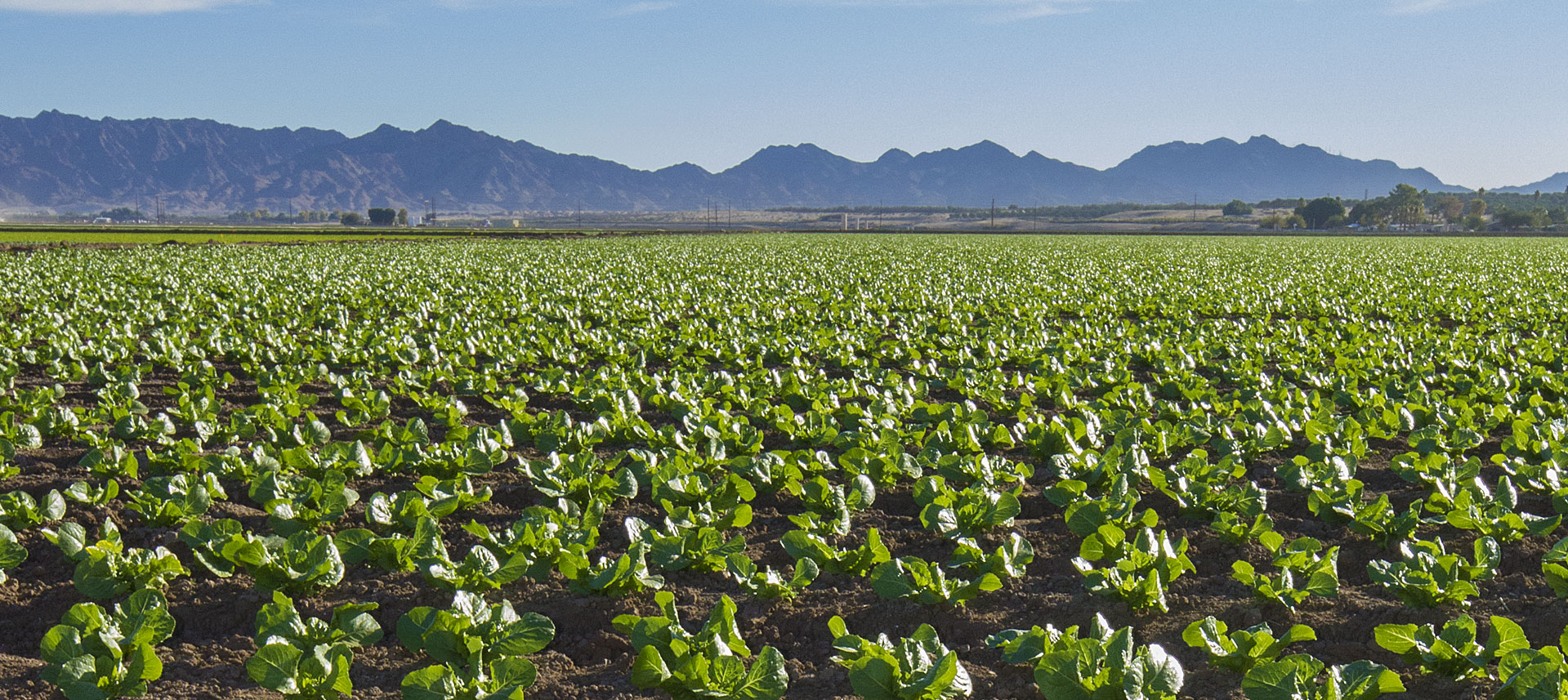- There are about 180,000 acres physically in agricultural production in Yuma County. You will see statistics indicating 230,000 or more acres planted, which is true. Almost all fields are planted to two crops per year leading to double counting in some cases. With short season vegetables or herbs, there may be more than two crops per year.
- Essentially all irrigation water is direct diversion from the Colorado, based on the amount of each irrigated area is entitled. Wells are seldom used because the water quality is not suitable for the crops we grow due to salt content.
- All of the fields are pool table flat, there is no field runoff or water reuse. This greatly reduces spread of weed seed, diseases insect pests. Irrigation water is managed to maintain an on-farm irrigation efficiency nearing 75 percent. This is probably the most efficient surface irrigated cropland in the world.
- The annual rainfall in Yuma county is 3 to 4 inches a year.
- The annual evaporation rate is 10 feet per year.
- Soils farmed were formed by the overflow of the Gila and Colorado Rivers over thousands of years. Some of the Yuma soils were probably part of the Grand Canyon at one time.
- Food Safety is an essential part of crop production. No entry is allowed into farm fields at any time by unauthorized persons. Keeping waste, litter animals or vehicles from the growing areas is critical to maintain the safety of your food.
- Irrigated cropland ranges in price from $20 to $30,000 per acre, depending on soils and location.
- The equipment you see in the field during harvest are called harvest aids.

- Growers and packers of vegetables continue to mechanize many of their operations due to growing labor concerns. To make automated equipment practical, plant breeders are developing plants that are better adapted to total field harvest, specifically plants that all get ripe at the same time. Plants are also being grown with longer stems to make mechanical harvest possible.
- Sprinklers are use to establish vegetable crops, decreasing the water used for germination by 50 to 75 percent.
- Field rows are laid out using Global Positioning Systems which guide the tractor. This allows tillage, fertilizer application and other operations to be extremely accurate since the tractor operator uses the identical settings for each operation on the field.
- 2017 vegetable production uses less water with greater yields than 10 years ago.

